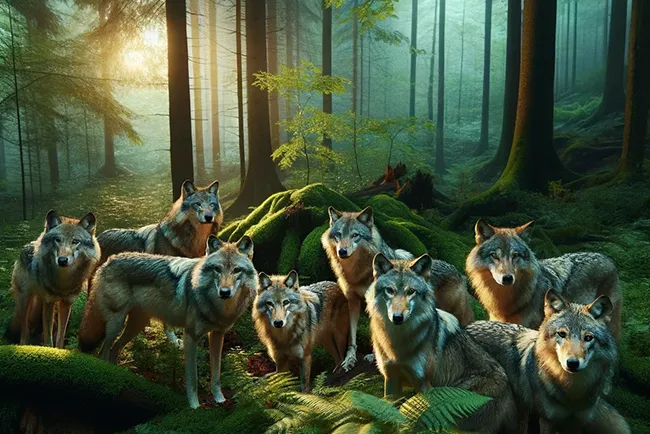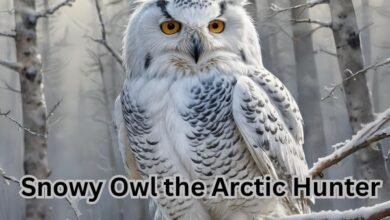
The gray wolf, scientifically known as Canis lupus, is the largest wild member of the dog family and is found in various subspecies across the Northern Hemisphere. This apex predator is equipped with keen senses, large canine teeth, powerful jaws, and the ability to run at speeds up to 60 km/h (37 mph), making it highly effective in hunting. Gray wolves are social animals that live in packs, usually consisting of a family group with a dominant breeding pair. They communicate through visual signals, vocalizations, and scent marking. Wolves have complex social structures, hunt in packs to capture large herbivores, and play a crucial role in their ecosystems by controlling prey populations and thus maintaining balance.
Physical Description
The gray wolf is remarkably adapted for hunting with its keen senses, large canine teeth, powerful jaws, and swift running speed of up to 60 km/h. Adult males typically reach about 2 meters in length, inclusive of a bushy tail, and weigh around 45 kg, though their weight can vary significantly across different regions. Females are generally 20 percent smaller. Geographic variations lead to size differences, with the largest wolves in west-central Canada, Alaska, and northern Asia, and the smallest in regions like the Middle East, Arabia, and India. Their fur color ranges widely, from gray to reddish and even light colors in Arctic habitats, reflecting their broad distribution and adaptability.
Pack Behaviour
Gray wolves exhibit complex social structures within their packs, typically led by an alpha male and female. These packs, consisting of family members ranging from the leaders’ offspring to possibly a few unrelated individuals, work cooperatively in hunting, territory defense, and caring for the young. The social dynamics within a pack emphasize the importance of each member’s role in survival and success, showcasing the intricacies of wolf social behavior and their communicative methods, including vocalizations and body language.
Predators and Prey
Gray wolves primarily hunt large herbivores but will consume smaller animals, fish, or livestock when necessary. They tend to hunt at night, particularly near human settlements or in warmer climates. While their impact on prey populations remains debated, wolves can affect livestock numbers, prompting compensation programs in some regions. Wolves face few natural predators besides humans, with diseases and intraspecific conflicts also posing significant threats to their survival. For a comprehensive understanding, please refer to the detailed insights provided in the source material.
Conservation status
The gray wolf has navigated a complex path from near extinction due to human conflict to a symbol of wildlife conservation. Through targeted reintroduction efforts, such as those in Yellowstone National Park and for the Mexican gray wolf in Arizona, along with changing public perceptions and legal protections, wolf populations have shown promising recovery in North America and parts of Europe. These efforts, coupled with a growing recognition of the wolf’s ecological role, have led to an increase in their numbers and a cautious optimism for their future sustainability and coexistence with human populations.
Conclusion
Gray wolves, once on the brink of extinction due to human persecution. Have made a remarkable comeback through conservation efforts, legal protections, and reintroduction programs. Their recovery highlights the importance of understanding and coexisting with wildlife. Showcasing the gray wolf not only as a symbol of wilderness but as a key player in maintaining ecological balance. Their story is a testament to the resilience of nature and the positive impact of human intervention in wildlife conservation.




